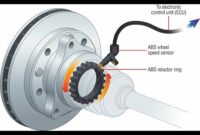
We will learn all about the difference between 5w30 and 10w30 oil to know which one is best for our vehicle.
Difference between 5W-30 and 10W-30. Which is better?
Here we explain everything about both types of oil to know their difference and which one works best for us:
5W-30 VS. 10W-30
5W30 and 10W30 lubricants have the same viscosity at engine operating temperature. Which is usually 100°C (212°F) when the motor is active (in an average motor).
See also: Does Cataclean work? What are the problems after using it?
However, 10W30 oil is much thicker when it’s cold. According to the recommendations API (1) for vehicle engines, you can use 10W30 oil if the maximum outdoor temperature is higher than -18 °C (0 °F). If you live in an area where the outside temperature is below freezing, then 5W30 oil is best suited for your car’s engine. It is correct to follow the instructions of the engine manufacturer.
5W – 30 vs. 10W – 30 at 100°C
https://www.youtube.com/watch?v=vYVcM59BThI
The video shows 5W30 and 10W30 motor oils in tubes at 100°C (212°F). A steel ball that fluctuates from top to bottom indicates the thickness or viscosity of the oil. At 100 °C (212 °F), the viscosity or resistance to flow it is usually almost identical for 5W30 and 10W30 oil.
The number 30 both in 5W30 as in 10W30 indicates the SAE viscosity at 100°C (212°F). Being the operating temperature of a standard motor. The number before “W” (5WXX and 10WXX) warns about the SAE oil viscosity when it cools down W indicates winter or cold and that is why it is shown in color blue.
Oil 5W30 has a viscosity «SAE 5« Y 10W30 has a viscosity «SAE 10« (5W Y 10W) when cooled. A number SAE higher allows the oil to be thicker or have a higher viscosity. SAE 10 is thicker than SAE 5so in much the same way SAE 40 is thicker or has a higher viscosity than SAE 30. You can consult the table of SAE viscosity named SAE J300 standard.
Therefore, the two types of oil, 5W30 Y 10W30have the same viscosity (SAE 30) when the motor is active its function is the same. However, the oil 10W30 is much thicker (higher viscosity) than 5W30 when being in colder temperature.
To know EVERYONE commercial oils that meet the standards enter the following link: API EOLCS Licensee Directory.
“W” relates to winter or cold
In the video we can see tubes with lubricants 5W30 Y 10W30. Both tubes with the steel ball were refrigerated to -18°C within half an hour. Air bubbles will be trapped in the test tubes due to the low temperature. Oil thickness 10W30 is older.
Which is better?
In the vehicle engines currents, the oil is required to be lighter when starting the engine. Almost all experts agree that 80% of engine wear occurs during engine start-up (warm-up). However there is a problem with thicker oil when the engine cools down. It is a requirement that the oil be more fluid when starting the car engine.
The lubricant should immediately reach all parts of the engine. However, the drawback with thicker oil is that the oil’s resistance to flow is high. Therefore, the oil will not reach all the moving parts of the engine when starting.
The 5W oil30 It has the same viscosity at 100 °C, however it is more fluid when cooled. 5W30 It is usually always a synthetic lubricant. The only drawback with 5W30 is NOACK (evaporation tendencies of a lubricant “Motor oil” at high temperature).
Conclution
According to the motor oil guide APIif oil is used 10W30can be safely changed to 5W30 (on standard vehicle engines). 5W30 it is less thick than oil 10W30 when it cools down (Always follow the manufacturer’s recommendations.)
Although it is not always recommended to change 5W30 a 10W30 that are cheaper. Based on the motor oil guide APIyou can use the oil 10w30 if the lowest outside temperature is above -18 °C and you are following the manufacturer’s recommendations.
What happens if you use oil for your vehicle 5W40 instead of 15W40?
Oil 5W40 It is normally a recommended lubricant such as 15W40 by the car engine manufacturer, only if you drive in a hot climate. 5W It is a synthetic lubricant that has better oxidation resistance at longer drain intervals.
Can I use 10W30 instead of 5W30?
The only reason to choose 10W30 is its cost. Since the oil 5W30 is superior to 10W30 for vehicle engines. It is more recommended to choose synthetic oil 10W30. You will only have to change to mineral 10W30 if the lowest outdoor temperature is above -18 °C (0 °F). It is very important to always take into account the recommendations of the manufacturer of the engine of your car.
Can 5W30 be used instead of 10W30?
The answer is yes, for vehicle engines, the 5W30 it is usually synthetic and better than oil 10W30. The two lubricants have the same viscosity at the operating temperature of a standard car engine.
5W It has a lower viscosity when it cools down and is considered more optimal for the vehicle’s engine when starting it. For higher horsepower diesel engines, you will need to follow the manufacturer’s recommendations due to a NOACK more leaven in the oil 5W.
Is 10W30 thicker than 5W30?
Both the lubricant 10W30 As the 5W30 they have the same viscosity at 100 °C (212 °F), which is the operating temperature of a standard engine. However the oil 10W it is thicker or has a higher viscosity when cooled.
What does the “W” stand for in SAE viscosity grades?
“W” means winter, for example in 5W30the lubricant has a viscosity SAE 5 when cooled and a viscosity SAE 30 when the motor is active. There are 2 sets of numbers in 5W – 30. The number 30 It is related to the viscosity or thickness of the oil when it is at 100°C.
Considered a working temperature for the average engine. The « W « it means winter Y 5W it is based on the performance of the oil when cooled. Then 5W – 30 is SAE 30 from viscosity when it is at 100°C and viscosity SAE 5 when it cools down
https://www.youtube.com/watch?v=vYVcM59BThI
Writing by Gossipvehículos / Source: olezol.com




